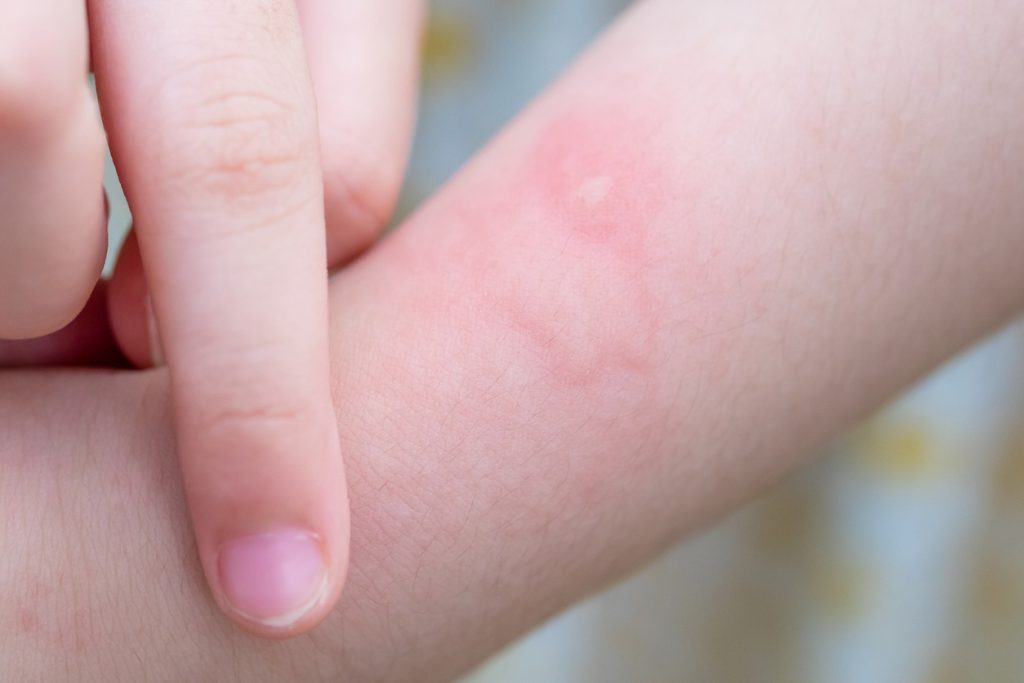What are hives and how do you treat them?
If you’ve ever had red or skin-coloured bumps that appeared and disappeared quickly, then it’s possible it might have been hives.

What are hives?
Hives are an outbreak of itchy pale red bumps or welts that appear suddenly on the skin. Also known as urticaria, hives affect around 20 per cent of people at some time during their life and in most cases it’s not due to an allergy.
Under the lining of your skin are mast cells containing chemicals, including histamine, which initiates the body’s immune response to help it deal with injuries and fight infection.
When these are released into the skin in small amounts, they cause itching and irritation. When released in large amounts, fluid leaks out of the blood vessels, which results in the swelling we know as hives.
These bumps or ‘wheals’ can vary in size, from relatively small to as big as a dinner plate and can be circular, oval or ring-shaped. Hives can appear pretty much anywhere on your body, but it’s most common to see them in clusters on your torso, throat, arms and legs. Most disappear within a few hours, only to be replaced by new ones elsewhere on the skin.
In acute (short-lived) hives, the wheals may come and go for a few days or even weeks but in rare cases, chronic hives can keep appearing for months or even years.
Wheals that persist in exactly the same spot for more than 24 hours may indicate a different disorder known as urticarial vasculitis If you think you’ve got vasculitis, you should consult a doctor.
What are the symptoms of hives?
Symptoms of hives can include raised circular bumps that look like mosquito bites – usually red on the outer rim and white in the centre, which are visible for around 2 to 4 hours (sometimes up to 24 hours). They appear in batches or clusters, and as one batch fades away, a new lot appears.

What causes hives?
Frustratingly, in 80 per cent of cases the cause of hives is unknown. But factors that are known to cause hives can include:
- medication – such as antibiotics, aspirin and codeine
- allergic reactions to foods
- some food additives
- infections – including bacterial, viral or parasitic
- respiratory infections (particularly in young children)
- certain underlying conditions – such as systemic lupus erythematosus, rubella and hepatitis
- emotional stress
- contact with plants or animals
- heat
- cold temperatures
- exercise and sweating
- bee and wasp stings.
In chronic hives, it is rare to find a cause, although it’s believed aspirin and codeine can aggravate it.
How can you treat hives?
If a trigger is identified that you can avoid, then hives usually resolve themselves. Where you can’t find or avoid the trigger, treatment may include:
- avoidance of factors that make the condition worse – such as aspirin, codeine, sunshine, heat and hot showers.
If you are experiencing symptoms of chronic hives, you should speak to a doctor to find out the right treatment for you. You can request a telehealth consultation with one of our Australian-registered doctors from anywhere in Australia, seven days a week.
To speak with an InstantScripts Doctor:
Request a ConsultationIf you have run out of your script:
Request a Script© InstantScripts
Level 8 / 637 Flinders St.,
Docklands VIC 3008

